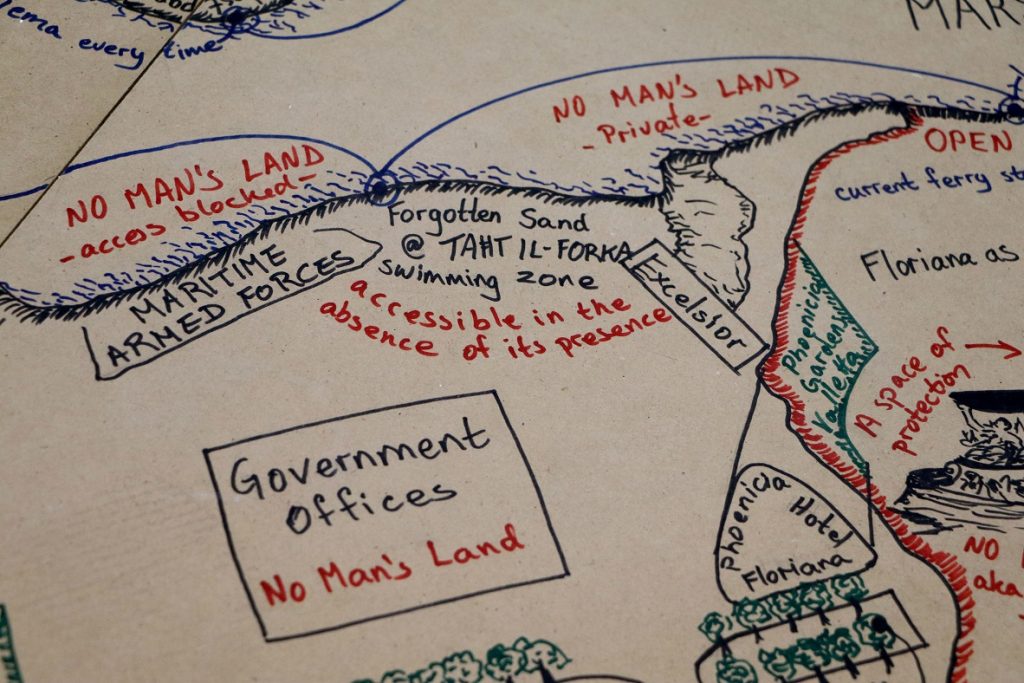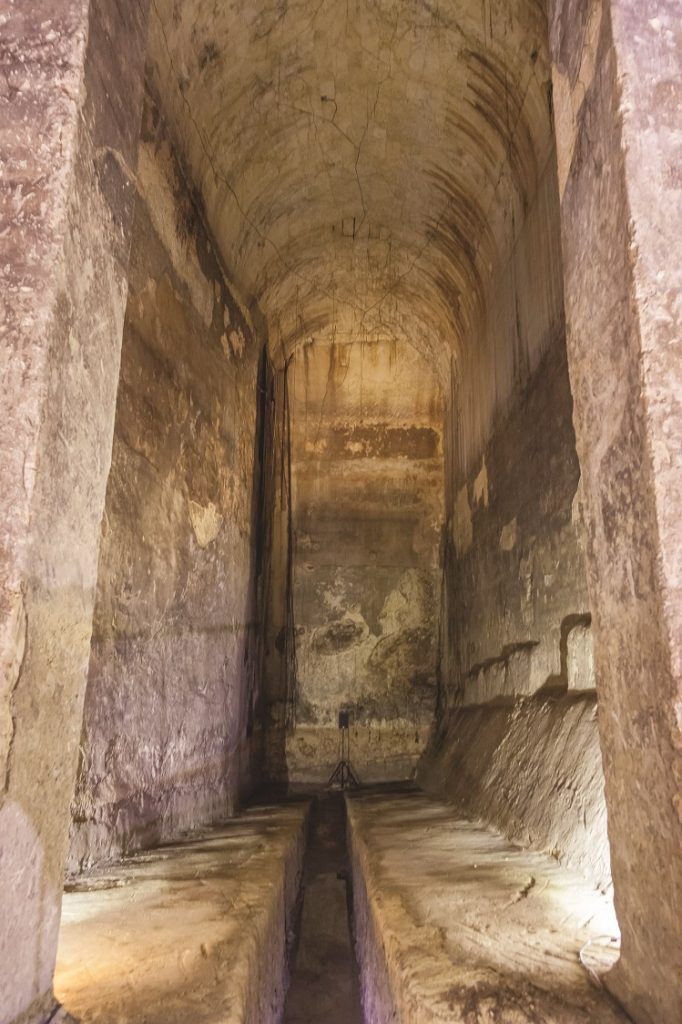Many voices, one common song
The Island is What the Sea Surrounds – the main exhibition of Valletta 2018, curated by Austrian Maren Richter – is on an international scale. Eighteen artists play the St Elmo Exam Centre in a way which proves that contemporary positions meet local references.

They know each other: they have met in Venice or Berlin – where many of the artists shown live. Raphael Vella is the one who recalls the actual use of the site. He places those single tables and hard chairs in reminiscence of the exams taken at St Elmo’s. And in his Archipelago installation, he asks: “Is an island a place one escapes to or escapes from?” He does that with Maltese artists in mind who, after leaving school, wonder if they should stay or go. As he himself has no answer, he invited other artists who have lived on islands around the Mediterranean Sea to contribute their texts, videos and images. He calls the collaborative work “the beginnings of a dialogue”.
The Island Is What the Sea Surrounds intends to provide a lot of food for thought. Maren Richter’s approach is typical of the European contemporary art scene – being an intellectual debate on social and political issues. If only it was a debate!
All these artists seem to be on the same wavelength; many of them deal with the migration crisis – and some present easy solutions to difficult matters. The Center for Political Beauty, for example, a German ‘assault team’ as they call themselves, presents its video The Jean Monnet Bridge (2016). They propose the building of a 230 km-long bridge between Africa and Sicily in an attempt to save lives and curb people-smuggling. Additionally, and until it would be finished in 2030, the European Union will install a thousand rescue platforms across the sea. Who would not want to see an end to the drowning? But is it really that simple? To me, “Free your mind and the rest will follow”, is not an adequate answer to the humanitarian challenge.
Having experienced similar exhibitions, I find that artists of the hour – such as Syrian-German Manaf Halbouni – produce to meet a demand. While the catalogue attempts to put his work, entitled Uprooted (an old car with an open boot in which to sleep), into a context of “the Maltese relationship with cars, real estate developments and displacement”, Halbouni suggests booking a night in his installations in Valletta, Birżebbuġia or Qala/Gozo in order to feel what it is like to have no home anymore. Again, is it an appropriate reaction to the gentrification process, or is it just a fashionable statement of the artist who gained international fame with his Monument: three upturned buses seemingly from Aleppo in the heart of Dresden and later in front of the Brandenburg Gate?

Heba Y. Amin (from Egypt) leaves the stronger impact as she digs out former colonisation plans to evaporate the Mediterranean Sea to create a supercontinent. And, right, Malta wouldn’t be an island anymore. Her project is also a feminist statement as she slips into the role of a dictator who oversees the ‘Operation Sunken Sea’. In May, she will deliver a speech in uniform in Valletta.
Art as research is a trend and, accordingly, Maltese Kristina Borg actually collected ethnological material when she interviewed mayors and residents of the Greater Sliema area and created an imaginary map. Her concept of No-Man’s Land explores how natives move out and foreigners move in. She combines her work with a public intervention in June, using a traditional – but electric-powered – luzzu boat.

Two artists were invited to use other public ground in Valletta: one is the Documenta 14 participant Ibrahim Mahama. He draws A Straight Line through the Carcass of History at the Pixkeria. His site-specific work is on a larger scale and wants to reflect the atmosphere of the old fish market and traces of the people who were employed there. So the Ghanaian installed a wooden frame, like the ones used for smoking fish in his home country, reaching from the gutter up to the ceiling. The structure divides the building into two halves and leaves the visitor with the question: Where do you stand?
Maybe the most impressive installation comes from Turner prize-recipient Susan Philipsz OBE. A good deal of the work has been done by nature, however. People queue in Republic Street to enter a cistern built by the Knights of St John underneath the Law Courts. They are overwhelmed by its height and the long fine roots which tangle like lianas from the trees in the street above into the room. When Susan Philipsz’ sound installation begins, some may shiver in this World War II shelter: You hear the ringing of a war-damaged bell and her voice intonating “Who by fire/who by water”, a Leonhard Cohen-song, meaning who decides in which way you die? (until 1 July)








